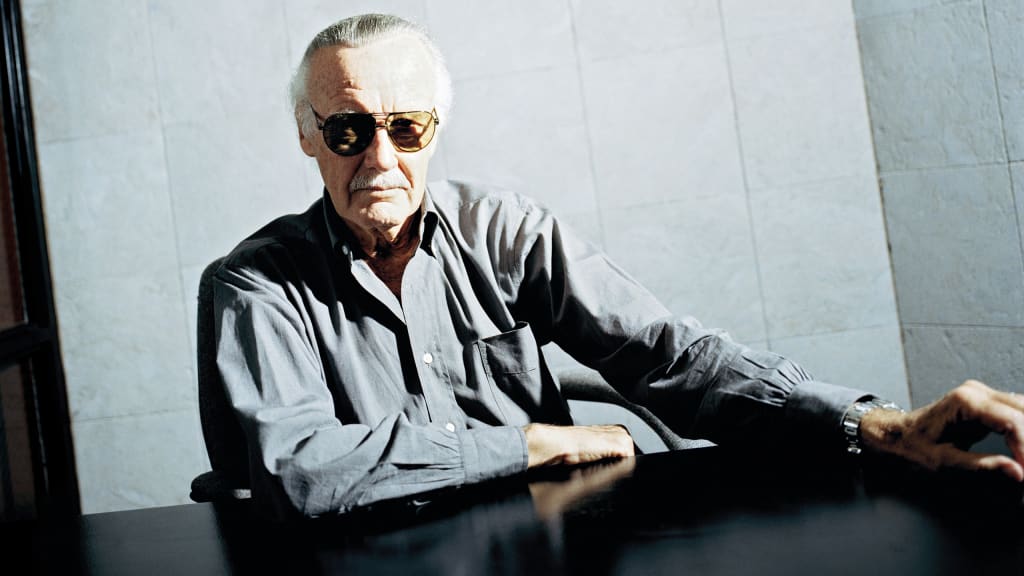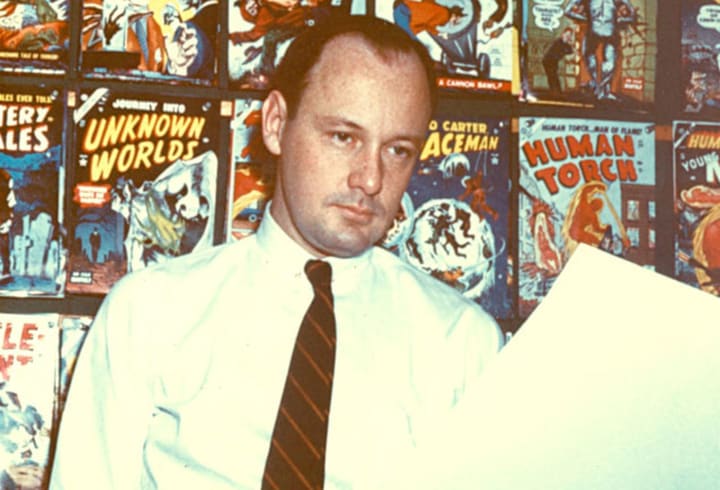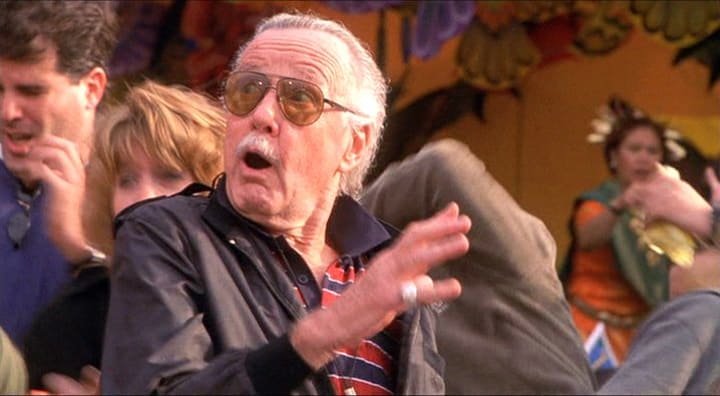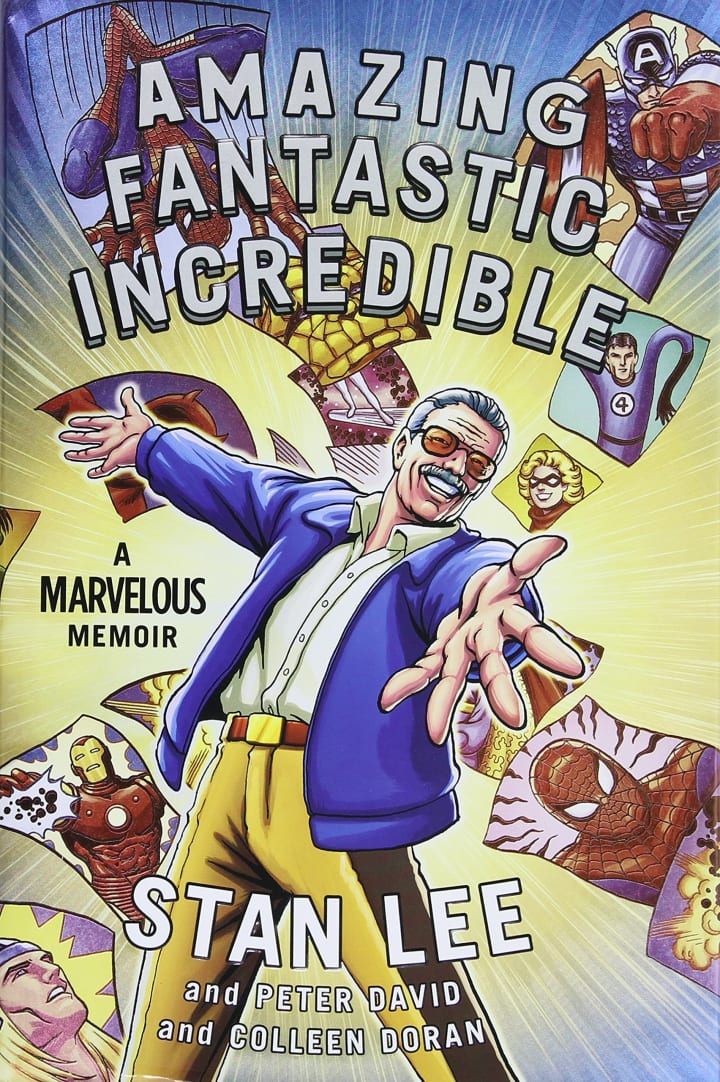10 Things You Didn't Know About Stan Lee
Here are some things you didn't know about Stan Lee and his life.

Unless you've been living under a rock for more than half a century, you know that Stan Lee is one of the most important and influential figures in the world of comic books. Lee's name is forever tied to Marvel Comics and the many characters that he created and worked on there. In fact, there is probably no better known name so closely associated with comic books. The titles associated with Lee are endless: The Incredible Hulk, The Amazing Spider-Man, Iron Man, and many more. If you know nothing about comic books or the pioneers who created them, you probably still know his name and the reason why he is famous. Without Lee, we would have been deprived, not only of his comics, but of the many Marvel Comic films of the 21st Century. Lee's creative vision has come to largely shape the idea and mystique of super heroes as a pop culture phenomenon. While these facts are largely and widely known, there are, perhaps, some things you didn't know about Stan Lee, comic book pioneer.
Stan Lee is a pen name.
As famous and illustrious as the pen name Stan Lee may be today, it is not actually the artist's true, birth-given name. Stan Lee was born Stanley Martin Lieber to Romanian Jewish immigrants in 1922. Lieber had a passion and drive for writing from a young age, deciding early on that he would make his living and name by writing professionally. Prior to writing comics, Lee got in his early experience writing obituaries and press releases, finding any outlet for his talent and taking full advantage. Believe it or not, writing comics was not always Lee's end game in writing. Lee initially aspired to be one of the great novelists of his time. Wishing to save his birth name for use at such a time, he adopted the moniker Stan Lee, essentially a truncation of his name. With the success of his comic book career, this moniker would remain with him.
He began interim editing at just 19.

While it is hard to imagine the highly revered nonagenarian as a young man, Stan Lee has given the vast majority of his life (74 of his 95 years), to working on and around comic books. Stan Lee was first given the opportunity to edit comics in 1941 following the departure of the legendary Joe Simon and Jack Kirby from Timely Comics. If this publisher is unfamiliar to you, it is because this was the company that Lee himself would turn into Marvel Comics. Beginning with the company doing menial tasks for the writers, Lee would then go on to write comics himself, taking over writing Captain America (a character created by his mentors Simon and Kirby) with Captain America Comics #3. After Kirby and Simon left the company on bad terms, publisher Martin Goodman named Lee interim editor, an early stepping stone in what would be an iconic and prodigious career.
Lee served in the military in WWII.
Stan Lee has done a lot in his 95-year-old life, but you may not have known that Stan Lee even spent some time in the Army. Like many young men of his generation, Lee joined the Army following the United States entry into World War II. Though he didn't serve in combat, Lee went into the Army in 1942, as a Signal Corps member, doing repair work and manual labor for the American communication infrastructure. However, Lee would soon be given the rare opportunity to put his writing and creativity to work for the Army after being moved to the training film department, likely in recognition of his writing abilities. As part of these duties, Lee was responsible for writing manuals for the Army, as well as devising slogans for the war effort. Lee would return to writing for Timely Comics in 1945 as the war came to a close.
He created the concept of a comic universe.

Without what Stan Lee did for superheroes, we would likely not have concepts like the “shared universe.” While characters crossing over from other series was not a new concept, Stan Lee essentially generated the first comic universe with his Marvel characters. This innovation was rooted in Lee's indecision on a story ending. At a loss for an ending, Lee decided to continue the narrative in the next issue. With the success of this ploy, Lee decided he would up the ante by merging the worlds of all of his characters into a broader narrative world. Consequently, Lee was able to insert characters from one title into another story-line, to enrich his comics and create a universe that would make J.R.R. Tolkien jealous. This was essentially the big bang of the Marvel Universe, the larger than life cultural phenomenon that is still ever-present. The success of this venture would inspire other iconic comic book companies like DC Comics to create their own universes.
He nearly gave up on comic writing.
At a time when comics were thought to be cheap entertainment for kids by many, Lee was reluctant to accordingly dumb down his writing, despite urges from his superiors. Known for his eloquent writing, Stan Lee was asked by his bosses to use more accessible language in his writing. This did not sit well with Lee. After the successful re-boot of The Flash by DC comics, the genre became a more respected and popular medium. In response, Lee was tasked with the creation of a team of superheroes. As a result, Lee created The Fantastic Four. Fed up with being asked to cheapen his work, Lee decided not only that this would be his last title, but that he would use even loftier and more grandiose language. Instead of just sticking it to his bosses, Lee accidentally created a new and influential direction in the course of comic book writing history.
Lee gave more dimension to comic book heroes.

Stan Lee saw a need to humanize superheroes, where they had long been relatively one dimensional. It is fair to say that we would have some very cheesy comic book characters and films today without Stan Lee's dedication to creating realism in his work. Lee wished to make his characters more human and, as a result, emotionally complex. In addition to fleshing out the characters he created in the Marvel Universe, Lee’s innovation is largely what separates the hokey, lighthearted antics of DC characters like Adam West's TV portrayal of Batman and the evolution of the character to Christian Bale's morbid and grim Dark Knight (respectfully agreeing to forget George Clooney’s portrayal.) Where most comic heroes of the time were absurdly amicable and jovial, Lee strove to create characters that possessed the emotional ranges of real people with their own demons and inner struggles that would often project into their interactions with others.
He fundamentally changed the way comics were written.
Stan Lee is an undeniable giant in the history and evolution of comic book culture for a vast variety of reasons. While Stan Lee is best known for the iconic heroes and villains he created, he is also responsible for innovating and accelerating the evolution of comic book writing methodology dramatically. Stan Lee completely changed the procedural process of putting together comics by creating what would come to be known as the "Marvel Method." Lee's new found method was born of necessity with the busy schedule he developed at Marvel. Being that he had to concurrently write so many different titles, Lee needed to streamline his writing process in order to complete them all on time. Lee began to give the artist a basic narrative, on which to base the art for the comic. After the art was completed, Lee would add in the text, an inversion of the traditional process.
Stan Lee has been in every movie or television show based on his characters.

It has long been a tradition for directors and creators to make brief appearances in their films. Legendary directors like Alfred Hitchcock would subtly insert themselves into scenes as a small Easter egg to dedicated fans. Perhaps as a nod to Hitchcock, Stan Lee has taken this tradition to the next level. As per his contractual request, Stan Lee has made an appearance in every single film and television program based on the characters that he created, perhaps an indication of his foresight for the enormous success of his brand and characters. Consequently, he has a staggering 120 acting credits, according to IMDB; a statistic that includes, not only most of the top ten comic book movies, but other film and television appearances as well. Far from Hitchcock's silent cameos, Lee would sometimes have speaking cameos, such as in the 2003 version of the Hulk (in a double cameo with Lou Ferrigno), 2005's Fantastic Four, and the controversial 2007 Spider-Man 3.
He has also written for DC Comics.
Known as the pioneer and driving force of Marvel Comics, it may surprise you to find out that Stan Lee has also done writing for other comic firms and creative ventures. In addition to writing an adult cartoon for Spike TV, Lee also worked with other comic book firms; namely the other great giant of the comic book industry, DC. In the early 2000s, DC Comics wished to capitalize on the success of their chief competitor to rival the recent resurgence in popularity of the Marvel characters Lee had created. To this end, DC employed Lee to write a new and unique series. Lee created what was to be known as Just Imagine. In this series, Lee put his own spin on iconic DC characters such as Batman, Superman, Green Lantern, Wonder Woman, and others, incorporating occasional references to his iconic work at Marvel by changing the street names of some characters. That might explain the similarities between some of the comic book characters that are practically the same.
Even his autobiography is a graphic novel.

Cover by Colleen Doran.
With so many accomplishments in his long and illustrious life, it comes as no surprise that Stan Lee has written an autobiography. However, Lee’s approach to writing an autobiography was anything but traditional, in keeping with the spirit of his innovative nature. It seems fitting that one of the pioneers of the comic book industry would choose to immortalize his life story in a form akin to the comics he was so famously known for. One of the things you didn't know about Stan Lee is that rather than just write a book, Lee made an autobiographical graphic novel. In his unique autobiographical graphic novel, Amazing Fantastic Incredible: A Marvelous Memoir, Stan Lee chronicles his life from childhood to present day. In the novel, Lee appears in cartoon form and chronicles the many chapters and accolades of his long and densely packed life. Being a Stan Lee work, the book has a lot of the same DNA as his comics with his mannerisms and attitudes.
About the Creator
Fred Eugene Park
Fred Park is a writer, singer and guitarist with a deep passion for music, sports and history. Fred graduated from Purchase College in 2016 with a BA in history.






Comments
There are no comments for this story
Be the first to respond and start the conversation.